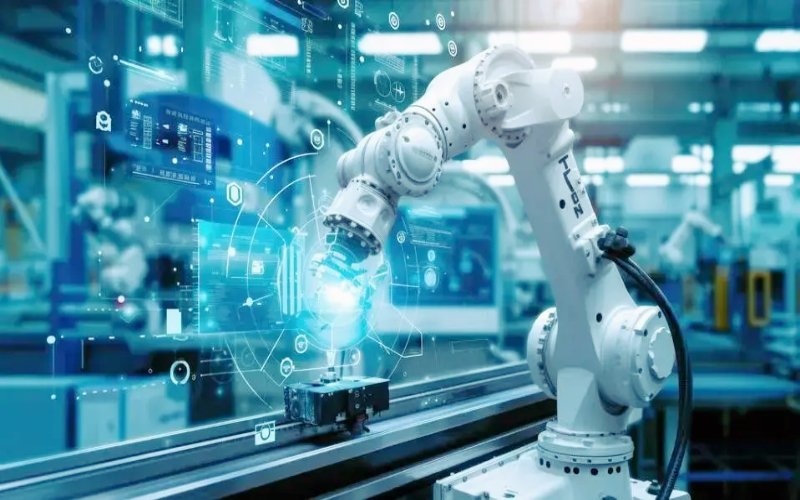Introduction: Defining the Terms
In today’s rapidly advancing world, the terms “technical” and “technological” are often used interchangeably. However, they are different ideas that are important to understand.Whether you’re a tech enthusiast, a professional in the field, or just curious, knowing the difference can provide valuable insights. Let’s explore these concepts to better grasp what sets them apart.
Understanding “Technical”
What Does “Technical” Mean?
“Technical” refers to specific skills, knowledge, or expertise in a particular field. It involves the practical application and understanding of how things work. For instance, a mechanic who repairs engines or a chef who masters a recipe demonstrates technical skills. These individuals possess specialized know-how and proficiency in performing tasks related to their domain.
The Scope of Technical Skills
Technical skills are hands-on and detail-oriented. They are precise and measurable, involving understanding processes, methods, and systems. This expertise is often acquired through study or practical experience. For example, an IT professional might have technical skills in coding, network management, or troubleshooting. These skills are essential for solving specific problems efficiently.
Understanding “Technological”
What Does “Technological” Mean?
“Technological” means using science and tools to solve problems or make new things. It encompasses innovation and invention driven by advancements in science and engineering. Think of technological advancements like smartphones or artificial intelligence – these innovations are the result of applying scientific principles to develop new solutions.
The Scope of Technological Innovations
Technological innovations involve creating new tools and systems that have a broader impact on society. They are forward-looking and often involve cutting-edge ideas. For instance, the development of renewable energy sources, like solar panels and wind turbines, showcases technological advancements. These innovations aim to improve our quality of life and solve large-scale problems.
Historical Context of Technical and Technological Advancements
Early Beginnings
The history of how things have been made better with new tools and technology is really interesting. Technical skills have been around for centuries, with ancient craftsmen and scholars developing specialized knowledge. For example, early blacksmiths and carpenters had technical expertise in their trades.
The Rise of Technological Innovations
Technological advancements gained prominence during the Industrial Revolution. The invention of the steam engine, spinning machines, and electricity marked significant milestones. These innovations not only improved efficiency but also transformed societies. In recent decades, digital technologies like the internet and artificial intelligence have accelerated technological progress, connecting people and providing access to vast amounts of information.
The job of technical and technological in society and industry
Technical Roles
In society and industry, technical solutions focus on the practical application of knowledge and skills. For example, technical expertise is crucial for maintaining machinery, troubleshooting issues, and ensuring smooth operations. In healthcare, technical skills are needed to operate medical equipment and provide patient care.
Technological Roles
On the other hand, technological solutions drive innovation and growth. They involve creating new products, processes, or services that have a broader impact. For instance, technological innovations in transportation, like electric vehicles and self-driving cars, are changing how we commute. In the tech industry, advancements in software and hardware are revolutionizing communication and productivity.
Examples of Technical and Technological Innovations
Technical Innovations
Examples of technical innovations include medical imaging technologies like MRI and CT scans, which provide detailed images of the human body without invasive procedures. These advancements have significantly improved diagnostic capabilities in healthcare. Another example is the development of precision agriculture tools that help farmers monitor crop health and optimize yields.
Technological Innovations
Technological innovations, on the other hand, include breakthroughs like smartphones, which have revolutionized communication by combining multiple functions into one device. The Internet of Things (IoT) is another technological advancement that connects everyday objects to the internet, allowing for remote control and monitoring. These innovations have transformed our daily lives and continue to shape the future.
Benefits of Technical and Technological Solutions
Advantages of Technical Solutions
Technical solutions are good because they work well. Established methodologies and practical skills ensure consistent results. For example, a technician repairing a machine follows specific steps to ensure it operates correctly. This reliability is crucial in industries where precision and consistency are essential.
Advantages of Technological Solutions
Technological solutions, however, offer scalability and adaptability. They can be updated or modified as new technologies emerge. For instance, software updates can enhance the functionality of a device, making it more efficient and user-friendly. Technological solutions provide flexibility and the potential for continuous improvement.
Limitations of Technical and Technological Solutions
Challenges with Technical Solutions
While technical solutions are reliable, they may face constraints when dealing with rapidly changing environments. Technical skills may not be enough to address new challenges that arise due to advancements in technology. For example, a technician might need additional training to work with new machinery.
Challenges with Technological Solutions
Technological solutions, on the other hand, may encounter challenges related to initial implementation costs or potential risks associated with reliance on technology. For instance, deploying a new software system may require significant investment and pose cybersecurity risks. Balancing innovation with practicality is essential to overcoming these challenges.
Educational Pathways for Technical and Technological Fields
Technical Education
Technical education focuses on imparting specific skills and practical knowledge. Trade schools and vocational programs offer courses in fields like plumbing, electrical work, and IT support. These programs are designed to provide hands-on experience and prepare students for specific careers. For instance, an aspiring mechanic might attend a technical school to learn the intricacies of engine repair.
Technological Education
Technological education, on the other hand, is broader and often pursued through universities. Degrees in fields such as computer science, biotechnology, and engineering combine theoretical knowledge with practical applications. These programs encourage innovation and problem-solving, equipping students with the skills needed to develop new technologies. For example, a student studying computer science might work on projects involving artificial intelligence and machine learning.
Skills and Competencies
Technical Skills
Technical skills are hands-on and practical. They involve knowing how to perform specific tasks, such as coding, operating machinery, or repairing equipment. These skills are often developed through experience and training. For instance, a network technician needs to understand how to configure and troubleshoot network systems effectively.
Technological Competencies
Technological competencies involve applying scientific knowledge to solve problems and create new solutions. These competencies require creative thinking and the ability to see the potential in new technologies. For example, an engineer developing a new type of solar panel must understand both the science behind solar energy and the practical applications of the technology.
Technological Innovations in Various Fields
Healthcare
In healthcare, technological innovations have led to significant advancements. Telemedicine platforms, for instance, allow patients to consult with doctors remotely, improving access to healthcare services. Additionally, precision medicine uses genetic information to tailor treatments to individual patients, enhancing the effectiveness of medical interventions.
Transportation
The transportation industry has also seen remarkable technological progress. Electric vehicles are becoming more common, reducing reliance on fossil fuels and decreasing environmental impact. Furthermore, autonomous vehicles are being developed, promising to revolutionize the way we travel by enhancing safety and efficiency on the roads.
Overlap and Interdependence of Technical and Technological Skills
Interconnected Roles
Technical and technological concepts often overlap and are interdependent. Many projects require both technical expertise and technological innovation. For example, developing a new smartphone involves both the technical skills needed to design and assemble the device and the technological knowledge required to integrate advanced features like facial recognition and augmented reality.
Synergy in Innovation
This synergy between technical and technological skills drives innovation. Technological advancements often create new opportunities for technical experts to apply their skills in novel ways. Similarly, technical improvements can enhance the functionality and effectiveness of technological innovations. This interplay is evident in fields such as IT, where software development and hardware engineering work together to create cutting-edge products.
Future Trends in Technical and Technological Development
Artificial Intelligence and Machine Learning
Artificial intelligence (AI) and machine learning are poised to reshape numerous industries. These technologies have the potential to automate complex tasks, analyze large datasets, and make predictions with high accuracy. As AI continues to evolve, we can expect it to play a more significant role in fields like healthcare, finance, and transportation.
Renewable Energy
The shift towards renewable energy sources is another exciting trend. Advances in solar, wind, and other renewable technologies are making clean energy more accessible and cost-effective. This transition is crucial for addressing climate change and ensuring a sustainable future.
5G and IoT
The rollout of 5G networks and the expansion of the Internet of Things (IoT) will enable new technologies and applications. Faster internet speeds and improved connectivity will enhance everything from smart homes to autonomous vehicles. The integration of IoT devices in various sectors will lead to increased efficiency and new capabilities.
FAQs: Clarifying Common Questions
What’s the Main Difference Between Technical and Technological?
The primary difference is that “technical” refers to specific skills and knowledge in a particular field, while “technological” involves applying scientific principles to create new tools and systems. Both are important but have different uses.
Can Someone Be Both Technical and Technological?
Absolutely! Many professionals combine technical skills with technological thinking to drive innovation. For example, an engineer might have the technical skills to build a device and the technological insight to develop a groundbreaking new product.
Is Coding a Technical or Technological Skill?
Coding is primarily a technical skill, but it is often used to create technological innovations. For instance, a software developer uses coding to build applications that leverage technological advancements.
How Important Are Technical Skills in a Technological World?
Technical skills are crucial in a technological world because they are needed to implement and maintain technological innovations. Without technical expertise, it would be challenging to apply new technologies effectively.
Are All Engineers Technological Thinkers?
Not necessarily. Some engineers focus on the technical aspects of their work, while others drive technological innovation. Both roles are essential for progress and often overlap.
Conclusion: Choosing the Right Approach for Your Needs
In today’s rapidly changing world, understanding the difference between technical and technological is essential for making informed decisions. Technical expertise involves practical skills and knowledge, while technological innovation leverages scientific principles to create new solutions. Both play crucial roles in various industries and often work together to drive progress.
Choosing the right approach depends on your specific needs and goals. Technical skills are essential for immediate problem-solving and maintaining systems, while technological innovations offer long-term solutions and drive future advancements. By combining both approaches, individuals and organizations can achieve remarkable results and stay ahead in a competitive landscape.
Whether you’re troubleshooting a computer issue or developing the next big app, integrating technical expertise with technological vision can lead to exciting possibilities. In this ever-evolving environment, the synergy between practical skills and innovative thinking will continue to shape our world and pave the way for future advancements.
Also visit on techitl.com.




